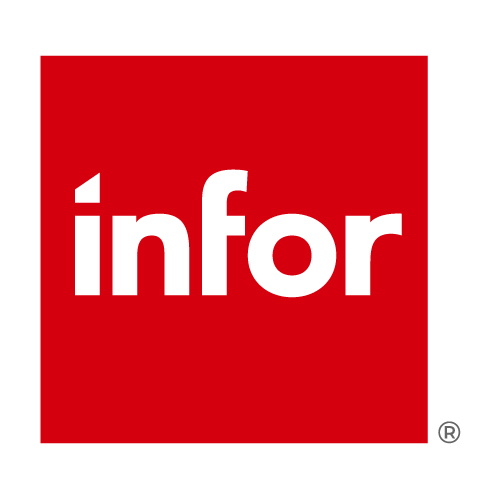
F&B manufacturers are navigating constantly changing material availability, seasonality constraints and volatile demand in an increasingly complex supply chain. Companies will need to harness the powers of intelligence if they are to successfully balance unpredictable supply and demand dynamics by utilising data to aid planning, coordinating and monitoring.

To excel at this, businesses should look to develop effective information systems for enhanced supply chain management success, which should be flexible, functional and secure. But while an effective information system increases chances of success, it is merely an enabler of the information sharing and collaboration, planning and management, measurement and improvement that is necessary for a business to be competitive with the potential to grow.
F&B manufacturers should therefore ensure they are set up with the right tools in place to facilitate collaboration through effective planning, sourcing, making and delivering of products, so they can successfully achieve end-to-end supply chain agility. Infor’s ERP solutions have industry functionality built in for operational excellence, product lifecycle management (PLM) and supply chain planning.
Creating accurate forecasts
Effective supply chain management starts with the ability to create and work from accurate forecasts, which need to be highly detailed and specific to location and product. It should also be able to successfully incorporate any updates which may impact operations or availability, so they can be quickly resolved.
Forecasting is essential for organisations to achieve the right balance between supply and demand. Automated forecasting that uses projection models and algorithms is one way to achieve this. But collaborative forecasting requires a demand planning solution that consolidates multiple streams of information into one source and enables quick and accurate responses to market changes, supply fluctuations, or operational disruptions. Machine learning (ML) has the capabilities here to automatically adapt forecasting formulas to match the demand pattern, so that more data points – which are a combination of location and product – can be forecasted more accurately without the need for manual labour, freeing up time for teams to focus on more value-adding activities. ML can also consider other factors such as weather and holidays that determine how demand may fluctuate accordingly in forecasts, rather than only aligning the forecast based on historical data.
It is crucial to move forecasting down the supply chain and closer to the end consumer to predict demand more accurately. Such a solution should also allow collaboration from the sales team, product managers, and customers throughout the demand planning process to enable full transparency.
Aligning supply with demand and seasonality
F&B supply chains have unique requirements given that they involve raw materials, which are often subject to variations in quality, yield and nutritional attributes. Supplies may also only be available from specific geographies and in certain seasons. Synchronised planning and execution will help to ensure only the highest quality products reach consumers. Integrated business planning solutions allow for precise scheduling, more strict inventory management, delivery of fresher products to customers, decreased logistical expenses, and greater visibility into planning, forecasting and budgeting.
Adhering to regulatory compliance and quality standards is crucial if F&B manufacturers and products are to maintain a strong reputation within such a competitive market. The nature of the limited shelf life of goods for F&B manufacturers makes more sophisticated supply chain management imperative if they are to have greater control and visibility over inventory, increase distribution efficiency, and effectively coordinate supply and demand.
PLM makes it possible to source from alternative suppliers and even use alternative ingredients when needed, as it will show the impact on the label specifications immediately. Over the last decade, Ukraine has exported 45-55% of the global supply of sunflower oil. The war in Ukraine caused prices to soar and companies turned to using different oils when sunflower oil supply from Ukraine was impacted, resulting in businesses having to change hundreds of formulations overnight.
Maximising production, minimising downtime
System automation can be used to help distributors manage capacity and other supply chain limitations, such as shelf-life constraints, contamination risks, and the management of multiple plants and distribution centres. Industry-specific advanced scheduling technology can also be used to maximise tank utilisation and increase output by sequencing lines strategically. This takes into account factors such as tank capacity, clean-in-process, and flavour contamination, allowing production to continue without sacrificing quality and compliance.
The costly high-energy assets utilised in the production of F&B products makes minimising downtime critical so that production can continue at peak efficiency. Asset optimisation can be improved throughout the supply chain from the farm to the consumer by scheduling work orders, inventory planning, and maintenance execution.
As new e-commerce services are changing how products are delivered to consumers, increasing the uptime of assets has become even more important. By better managing assets with an advanced enterprise asset management (EAM) solution, companies can get the most out of their assets with increased visibility while improving overall equipment effectiveness. Taking a proactive approach to EAM strategies can help to avoid unplanned maintenance and downtime, get products to market faster and keep customer satisfaction high.
Building and maintaining relationships
An effective and rewarding supply chain provides incentives for each participating organisation to share information and fully support the overall goals of meeting demand and making a profit. Companies are increasingly dependent on trading partners such as suppliers, transportation providers, distributors, and retailers to acquire, produce, and deliver products to customers. Collaboration and data sharing between these parties helps to improve performance, reduce inventory, and increase availability, regardless of the distribution strategy employed.
With the help of new technologies, collaboration is now easier and more impactful. ERP and supply chain systems now incorporate the advanced visibility of the Internet of Things (IoT), with data sharing and collaborative functions such as workbenches, supplier and customer portals, and direct links between systems. These features aim to facilitate joint awareness and coordinated decision-making.
Planning for long-term goals
Effective supply chain processes require input from both internal and external stakeholders. As organisations grow, introduce new products, remove others, acquire new companies, and shift priorities, stakeholders are constantly changing, and fragmented communication processes can easily overlook them. Long-term strategic planning requires sharing critical information with work teams throughout an organisation, with suppliers, and with customers.
The most current and accurate information is vital for improving customer service, maximising margins, and minimising losses from missed inventory targets, downtime, spoilage, or other challenges. Infor recently introduced the Supplier Portal, which will inform F&B manufacturers more quickly regarding any changes to supply so that production schedules can be adjusted and alternative raw material sources can be used to fulfill demand.
Aligning strategies for F&B manufacturers
The modern supply chain operates efficiently by depending on real-time data and insights to inform shifts that capitalise on market changes. With the right supply chain planning solutions, F&B manufacturers will have the agility and data needed to improve decision-making in supply chain management. A constant connection between tactical planning and operational execution will help organisations to respond faster to demand and supply changes at a lower cost. Cloud-based planning solutions can help align planning with execution by establishing real-time global visibility into operations, fostering a more collaborative enterprise-wide feedback loop that alerts stakeholders whether they are staying on plan while also bringing their attention to emerging challenges.








